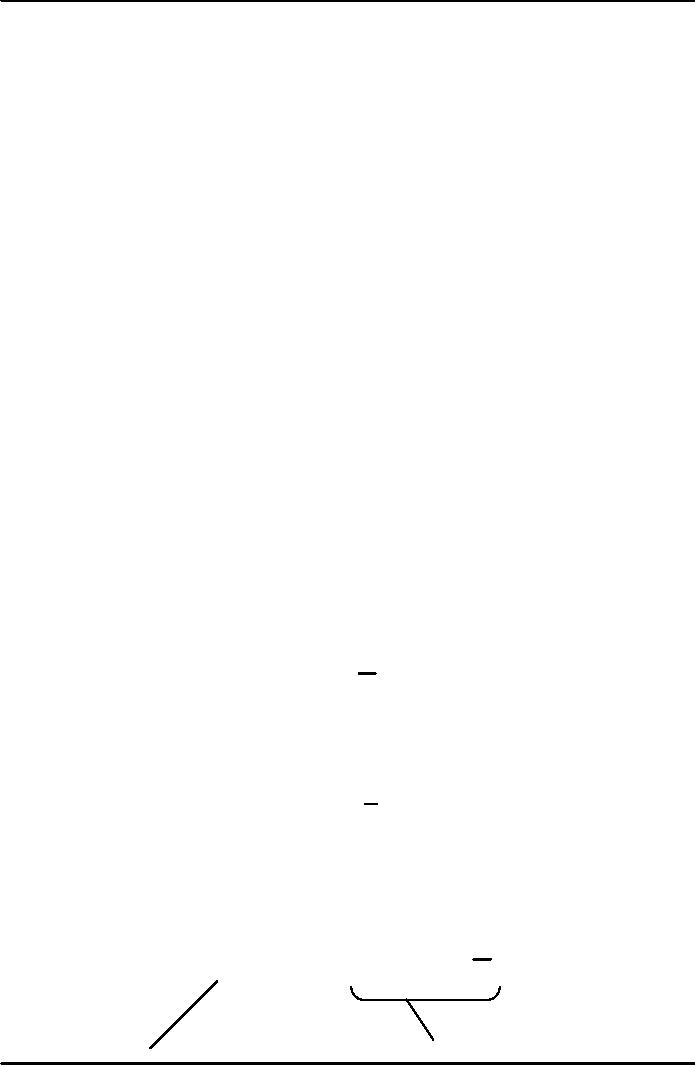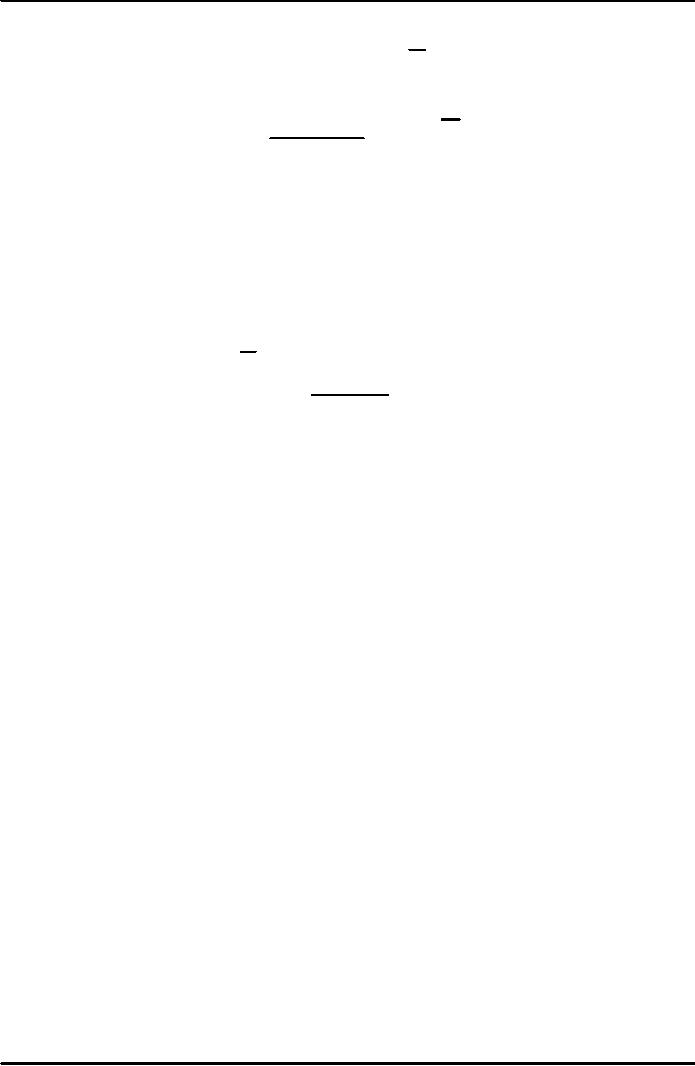 |
AGGREGATE SUPPLY:The sticky-price model |
| << AGGREGATE DEMAND IN THE OPEN ECONOMY (Continued…):Why income might not rise |
| AGGREGATE SUPPLY (Continued…):Deriving the Phillips Curve from SRAS >> |

Macroeconomics
ECO 403
VU
LESSON
33
AGGREGATE
SUPPLY
The
imperfect-information model
Assumptions:
�
All
wages and prices perfectly
flexible,
all
markets clear
�
Each
supplier produces one good,
consumes many goods
�
Each
supplier knows the nominal
price of the good she
produces, but does not
know
the
overall price level
�
Supply
of each good depends on its
relative price: the nominal
price of the good divided
by
the
overall price level.
Supplier doesn't know price
level at the time she
makes her
production
decision, so uses the
expected price level, P
e.
�
Suppose
P rises but P e does
not.
Then
supplier thinks her relative
price has risen, so she
produces more. With
many
producers
thinking this way, Y will
rise whenever P rises above
P e.
The
sticky-price model
�
Reasons
for sticky prices:
Long-term
contracts between firms and
customers
Menu
costs
Firms do
not wish to annoy customers
with frequent price
changes
�
Assumption:
Firms set
their own prices
(e.g.
as in monopolistic competition)
�
An
individual firm's desired
price is
p
= P
+
a
(Y
-Y
)
Where
a > 0.
Suppose
two types of firms:
�
firms
with flexible prices, set
prices as above
�
firms
with sticky prices, must
set their price before
they know how P and Y
will
turn
out:
p
= P
e +
a
(Y
e -Y
e )
�
Assume
firms with sticky prices
expect that output will
equal its natural rate.
Then,
e
p
=P
�
To
derive the aggregate supply
curve, we first find an
expression for the overall
price level.
�
Let
s
denote
the fraction of firms with
sticky prices. Then, we can
write the overall
price
level
as
P
= s
P e + (1 -
s )[P
+
a(Y
-Y
)]
Price
set by
Price
set by
sticky
price firm
flexible
price firm
156

Macroeconomics
ECO 403
VU
�
Subtract
(1-s)
P from both sides:
sP
= s
P e + (1 -
s
)[a(Y
-Y
)]
Divide
both sides by s
:
�
⎡
(1
-
s
)
a
⎤
e
P
=P
⎥
(Y
-Y
)
+⎢
s
⎣
⎦
High
P e ⇒ High
P
�
If
firms expect high prices,
then firms who must
set prices in advance will
set them high.
Other
firms respond by setting
high prices.
High
Y⇒
High
P
�
When
income is high; the demand
for goods is high. Firms
with flexible prices set
high
prices.
The greater the fraction of
flexible price firms, the
smaller is s and the bigger
is the
effect
of Y on P.
�
Finally,
derive AS equation by solving
for Y:
Y
= Y
+ α (P
- P
e ),
s
where
α
=
(1
-
s
)a
In
contrast to the sticky-wage
model, the sticky-price
model implies a procyclical
real wage:
Suppose
aggregate output/income falls.
Then, Firms see a fall in
demand for their
products.
Firms
with sticky prices reduce
production, and hence reduce
their demand for
labor.
�The leftward shift in
labor demand causes the
real wage to fall.
157
Table of Contents:
- INTRODUCTION:COURSE DESCRIPTION, TEN PRINCIPLES OF ECONOMICS
- PRINCIPLE OF MACROECONOMICS:People Face Tradeoffs
- IMPORTANCE OF MACROECONOMICS:Interest rates and rental payments
- THE DATA OF MACROECONOMICS:Rules for computing GDP
- THE DATA OF MACROECONOMICS (Continued…):Components of Expenditures
- THE DATA OF MACROECONOMICS (Continued…):How to construct the CPI
- NATIONAL INCOME: WHERE IT COMES FROM AND WHERE IT GOES
- NATIONAL INCOME: WHERE IT COMES FROM AND WHERE IT GOES (Continued…)
- NATIONAL INCOME: WHERE IT COMES FROM AND WHERE IT GOES (Continued…)
- NATIONAL INCOME: WHERE IT COMES FROM AND WHERE IT GOES (Continued…)
- MONEY AND INFLATION:The Quantity Equation, Inflation and interest rates
- MONEY AND INFLATION (Continued…):Money demand and the nominal interest rate
- MONEY AND INFLATION (Continued…):Costs of expected inflation:
- MONEY AND INFLATION (Continued…):The Classical Dichotomy
- OPEN ECONOMY:Three experiments, The nominal exchange rate
- OPEN ECONOMY (Continued…):The Determinants of the Nominal Exchange Rate
- OPEN ECONOMY (Continued…):A first model of the natural rate
- ISSUES IN UNEMPLOYMENT:Public Policy and Job Search
- ECONOMIC GROWTH:THE SOLOW MODEL, Saving and investment
- ECONOMIC GROWTH (Continued…):The Steady State
- ECONOMIC GROWTH (Continued…):The Golden Rule Capital Stock
- ECONOMIC GROWTH (Continued…):The Golden Rule, Policies to promote growth
- ECONOMIC GROWTH (Continued…):Possible problems with industrial policy
- AGGREGATE DEMAND AND AGGREGATE SUPPLY:When prices are sticky
- AGGREGATE DEMAND AND AGGREGATE SUPPLY (Continued…):
- AGGREGATE DEMAND AND AGGREGATE SUPPLY (Continued…):
- AGGREGATE DEMAND AND AGGREGATE SUPPLY (Continued…)
- AGGREGATE DEMAND AND AGGREGATE SUPPLY (Continued…)
- AGGREGATE DEMAND AND AGGREGATE SUPPLY (Continued…)
- AGGREGATE DEMAND IN THE OPEN ECONOMY:Lessons about fiscal policy
- AGGREGATE DEMAND IN THE OPEN ECONOMY(Continued…):Fixed exchange rates
- AGGREGATE DEMAND IN THE OPEN ECONOMY (Continued…):Why income might not rise
- AGGREGATE SUPPLY:The sticky-price model
- AGGREGATE SUPPLY (Continued…):Deriving the Phillips Curve from SRAS
- GOVERNMENT DEBT:Permanent Debt, Floating Debt, Unfunded Debts
- GOVERNMENT DEBT (Continued…):Starting with too little capital,
- CONSUMPTION:Secular Stagnation and Simon Kuznets
- CONSUMPTION (Continued…):Consumer Preferences, Constraints on Borrowings
- CONSUMPTION (Continued…):The Life-cycle Consumption Function
- INVESTMENT:The Rental Price of Capital, The Cost of Capital
- INVESTMENT (Continued…):The Determinants of Investment
- INVESTMENT (Continued…):Financing Constraints, Residential Investment
- INVESTMENT (Continued…):Inventories and the Real Interest Rate
- MONEY:Money Supply, Fractional Reserve Banking,
- MONEY (Continued…):Three Instruments of Money Supply, Money Demand